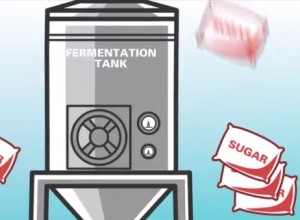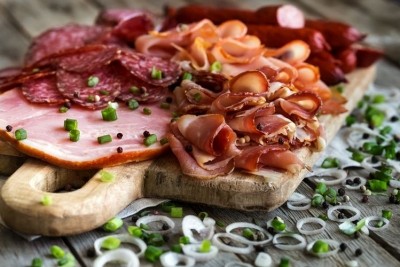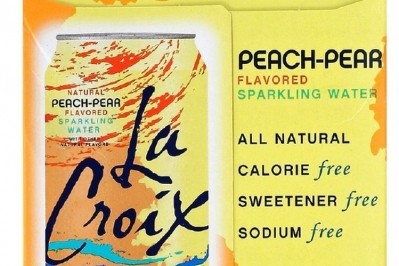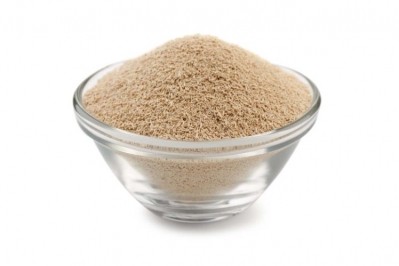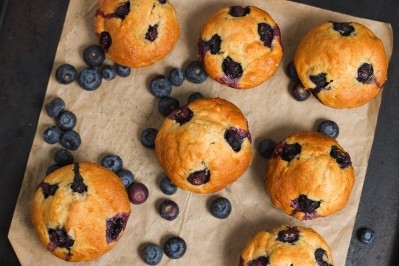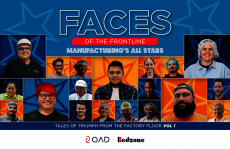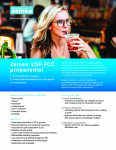Think clean label just means no artificial ingredients? Think again
CLEAN LABEL 2.0: Natural flavors and preservatives, pesticide residues, and Non-GMO in the spotlight
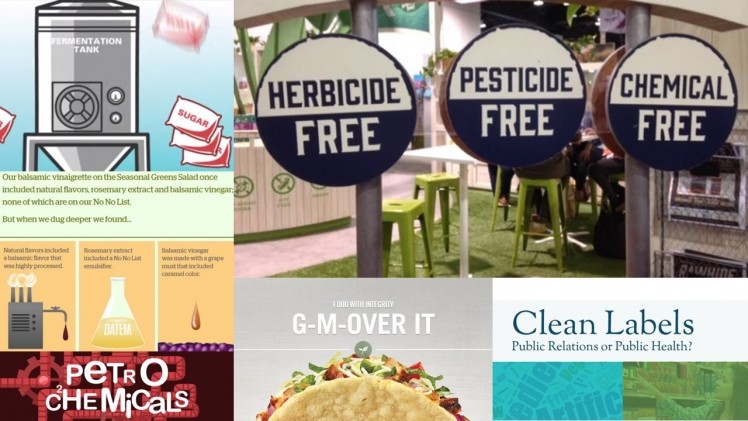
At Panera – which says its mission to produce “100% clean” food is about “reaffirming our commitment to craft”– the latest phase of its program has involved looking deeper into components within the ‘natural’ ingredients it uses to ensure they meet its standards.
Are natural flavors and preservatives always ‘clean label’?
“Our balsamic vinaigrette on the seasonal greens salad once included natural flavors, rosemary extract and balsamic vinegar, none of which are on our ‘no no’ list," says Panera on its website.
"But when we dug deeper, we found the natural flavors included a balsamic flavor that was highly processed, the rosemary extract included a no no list emulsifier [DATEM or diacetyl tartaric acid], and our balsamic vinegar was made with grape must that included caramel color.
“So we removed the natural flavors and replaced them with good balsamic vinegar and herbs like basil and oregano; we found a rosemary extract that didn’t contain the ‘no no’ emulsifier; and we worked with suppliers of our dressing ingredients to use a grape must without caramel color.”
How far along the supply chain do Non-GMO claims extend?
DanoneWave has also pledged that by the end of 2017, all products from the Dannon brand family will contain non-GMO ingredients and will be made with milk from cows fed non-GMO feed, with products from the Oikos and Danimals brand families to follow by the end of 2018.
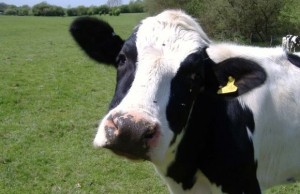
The move is notable in light of recent lawsuits which challenge both ‘natural’ and ‘non-GMO’ claims on meat and dairy products from animals fed GM feed, reflecting a heightened focus from consumers, advocacy groups and plaintiff’s attorneys on how ingredients are sourced and manufactured, not just what’s in them.
It also underlines the fact that food marketers might be well advised to consider the concerns of the ‘reasonable consumer’ always cited in false advertising lawsuits - as well as the letter of the law - when considering what claims to make on pack.
Under the yet to be enacted federal GMO labeling law, for example, companies will not have to adopt GMO labels if their dairy products don't contain ingredients derived from genetically engineered crops. However, dairy products do not qualify for the Non-GMO Project Verified stamp if they contain milk from animals fed GM feed, and brands making generic non-GMO claims in such circumstances are vulnerable to lawsuits.
What’s in your natural flavors?
In the world of flavors, meanwhile, the recent lawsuit against Hint Inc - which was accused of falsely advertising its wares as ‘all-natural’ because they featured natural flavors containing propylene glycol – has also focused minds on what’s in natural flavors, says Spindrift CEO Bill Creelman.
Spindrift dropped natural flavors from its sparkling water line because more and more consumers were asking what was in them, and it couldn’t provide a satisfactory answer, says Creelman. (Formulations had also improved to the extent that flavors were no longer an essential part of the recipe, he says.)
"Rather than making the meaningless replacements of high-fructose corn syrup with fructose or raw sugar, or iodized salt with sea salt, companies should instead reduce total added sugars and sodium." CSPI
The Center for Science in the Public Interest (CSPI) also talks about natural flavors in a January 2017 report on clean labels, noting that: "Paradoxically, both natural and artificial flavorings products can contain a wide range of synthetic non-flavoring ingredients, such as artificial preservatives, artificial colorings, and emulsifiers. In addition, some companies use the catch-all term of “natural flavorings” to hide ingredients that consumers might not recognize or want."
At Israeli flavors and natural ingredients giant Frutrarom, meanwhile, president and CEO Ori Yehudai says more customers are now “asking for a straight extract, rather than natural flavor,” and also predicts that pesticide residues will be “a big issue for the industry going forward.”
Consumers and ‘clean’ food: Where is the clean label trend going next? Hartman Group weighs in...
Pesticide residues… pay day for plaintiff’s attorneys?
So are pesticide residues an emerging issue in the clean label debate?
The fact that non-glyphosate certification is now available certainly suggests pesticides are certainly on the radar of many CPG firms, while recent complaints filed against Post Foods, General Mills and Quaker Oats show that if your product contains even trace levels of pesticide residue, and you are calling it '100% natural,' you could face a false advertising lawsuit.
The plaintiffs in the cases in question acknowledge that the trace levels of the herbicide glyphosate allegedly detected in the products at issue are significantly below the legally permitted threshold of 30ppm for cereal grains, but argue that reasonable consumers would not expect to see glyphosate residues at any level in products labeled as ‘100% natural’.
The fact that glyphosate may well be added to the list of chemicals included in California's Prop 65 legislation (unless a legal challenge by Monsanto succeeds - and it’s not looking promising) should also focus minds (click HERE).
It’s unclear at this stage whether pesticide residue lawsuits are going to make any progress in the courts, but like the Non-GMO/natural cases over dairy products, they highlight the fact that companies need to think about what they are doing at every stage in their supply chain and consider legal vulnerabilities when they make marketing claims, regardless of what’s in the final product.
Synthetic biology and clean labels
The same applies to companies making the next generation of ‘natural’ ingredients via a fermentation process that may include techniques such as synthetic biology whereby microbes can be engineered or programmed to produce compounds found in nature, from casein (milk protein) and collagen to steviol glycosides and vanillin.
Even if these food ingredients are chemically identical to the molecules found in the stevia leaf or cow’s milk, will consumers – or plaintiff’s attorneys - consider them to be ‘natural’ or ‘clean label’?
At Camlin Fine Sciences, which supplies natural and artificial preservatives, general manager, North America, Jennifer Igou says CFS is now seeing strong demand from foodservice companies as well as CPG brands and retailers for natural alternatives to TBHQ and BHA. "The volume of traditional synthetic antioxidants is still way larger, and still increasing by around 5% YoY, but the growth rates in natural are much higher, in the double digits."
The most challenging applications when it comes to using natural antioxidants such as green tea, acerola, mixed tocopherols or rosemary extracts are "really flavor sensitive applications such as dairy powders, because natural antioxidants have a flavor of their own," says Igou.
"Additionally, products that are processed at high heat for a long period of time also present challenges for natural ingredients, which are not as heat stable. So you may have to increase application rates or a second application might be recommended."
As for new natural antioxidants, she says, there are plenty of things in the pipeline, and more potential in blends, but efficacy is key:"You see some licorice extracts being marketed as natural antioxidants, but when we've tested them in our labs, we don't see the effects being claimed."
The CSPI recently surveyed leading US restaurants and supermarkets and found:
- None of the companies’ clean-label lists limit the amounts of sodium or added sugars, which cause far more harm than all other additives combined
- While all exclude high-fructose corn syrup, that ingredient is not significantly more harmful than sucrose (table sugar).
- All companies exclude the use of many artificial ingredients that CSPI considers safe, such as modified food starch, calcium propionate, vanillin/ethyl vanillin, and calcium stearoyl lactylate.
- Restaurants’ clean-label policies don’t apply to beverages, the major source of some of the riskiest additives (added sugars, artificial sweeteners, and synthetic food colors).
- Clean-label products are not necessarily healthful. The absence of artificial ingredients does not make a food healthy, since it could still be loaded with saturated fat, salt, or added sugars and be largely devoid of dietary fiber and nutrients.
Source: CSPI report, Jan 2017: Clean Labels: Public relations, or public health?
Kantha Shelke: ‘Clean’ is in the eyes of the beholder
The challenge for manufacturers, says Kantha Shelke, PhD, principal at Chicago-based food science and research firm Corvus Blue, is that, “Clean is in the eyes of the beholder. What is clean to the organic consumer is not necessarily clean to the dietitian or nutritionist, and what is clean to the food scientist is not necessarily clean to retailers that are setting up their own standards.”
While the whole clean label debate has encouraged formulators to get more creative and explore technologies such as HPP and aseptic packaging that enable them to avoid things like preservatives altogether, it has also had some frustrating consequences, she says.
“The ‘clean label’ switch has not been favorable for enterprises that jumped into the alternative just to avoid the wrath of misinformed activists. For example, removal of carrageenan, far from the poligeenan that was shown by the Chicago researcher to be inflammatory, has affected the bottom line of several food enterprises as they reformulate and find alternatives.”
"Claims that companies have eliminated sodium nitrate, sodium nitrite or nitrates/nitrites in bacon and other processed meats are inherently misleading, since there is no reason to think that the natural sources of nitrates used [eg. celery salt] result in a safer product..." CSPI
Fat, salt and sugar
Like it or not, however, clean label is here to stay, says Dr Shelke: “Consumer interest and demand—as misinformed as it might be sometimes—is making ‘clean label’ the way to make foods. Consumers are increasingly concerned about what's in and what's NOT in the food they feed themselves, their families, and this includes their pets.”
But while we tend to associate clean label primarily with the quest to ditch unpronounceable additives, we shouldn’t forget that it can also mean removing “unnecessary” ingredients, which could be salt, fat and sugar, she adds:
“Removing ingredients that are not really necessary makes sense all around and that includes unnecessary fat, salt, and sugar…ingredients that found their way into packaged foods because of their excellent preservative and masking properties.”
Interested in clean label trends? Sign up for our FREE to attend webinar: Where next for clean label? on May 23. The event, sponsored by Farbest, ADM, Ingredion, and Cargill, explores...
- The evolution from clean label 1.0 to clean label 2.0
- Who really cares about clean label?
- How do consumers understand different elements of clean label?
- What does it take to clean up labeling?

